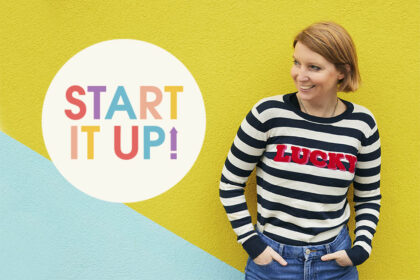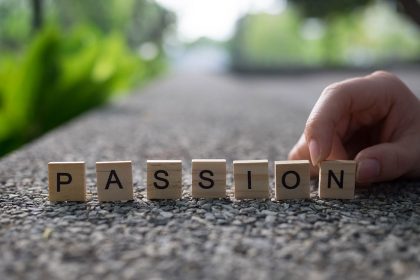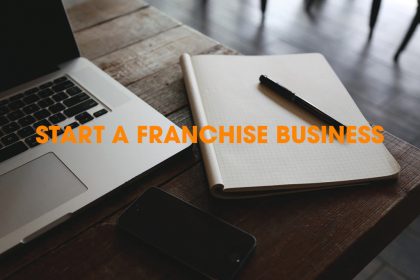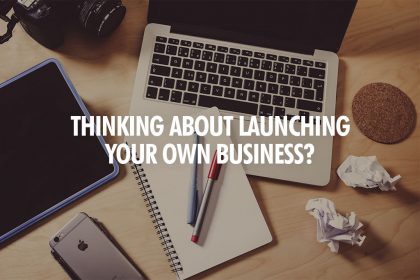How to run a successful Kickstarter campaign
Thinking about running a Kickstarter campaign for your personal project or business, but don’t know where to start? We asked a successful Kickstarter for her tips.
When Amanda Callis was turned down for essential funding for her social enterprise, Cool it Art, she turned to her plan B – Kickstarter. And with advice from the RSA she embarked on a last-minute campaign.
Incredibly, she didn’t just reach her Kickstarter target, she surpassed it, raising an impressive 113%. Now she’s kindly sharing her experience with us, revealing the tactics that worked, and those that didn’t.
What is Cool it Art?
Cool it Art is a social enterprise set up to provide free creative opportunities for the public to engage in. Our core activity is free art classes for 3-12 year olds focusing on creating projects out of household junk.
We have been running for over two years. And in that time we have facilitated after school art sessions, animation projects, murals, pop up art schools and big draw events, to name but a few of our projects.
How did it come about?
I set up Cool it Art in May 2013 after having worked in Art facilitation for seven years. I started as a student mentor in the second year of my Fine Art Painting degree at City & Guilds of London Art School for Cool it Schools (now known as Cool it Vision), which was set up by my personal tutor and mentor Jane Langley.
I have lived in Lambeth for just over 10 years. Lambeth has the sixth highest rate of child poverty across the London Boroughs, and through research I discovered that local primary schools didn’t have art on the curriculum any more.
I had always wanted to give back to my local community, but I wanted to get the relevant experience first to ensure I could deliver the project to the best of my ability. So I worked for other organisations such as Community House in Worthing and for an Artist’s collective, setting up and project managing free art classes in an empty shop for 10 months in North London which was run solely with artists like myself volunteering their time.
Once I had finished the free art classes in the empty shop I thought it was the right time to benefit my neighbourhood, so went ahead and registered the social enterprise in May 2013, and was awarded my first lot of funding in June 2013!
Why did you decide to use Kickstarter?
I was fortunate to be awarded a place on the Centenary Young Fellows programme at the RSA (Royal Society of Arts). The RSA have a crowdfunding team who give webinars on crowdfunding.
Unfortunately my funding had been rejected by one of the Big Lottery programmes as they are highly competitive. My current funder had already supported me for two years, and unfortunately weren’t in a position to do so again, so I was left in a really tricky position.
Cool it Art has done well in being awarded seven amounts of funding so far – but as I mentioned before funding is very competitive and does have time restrictions. The majority of funding bids have to be submitted at least six months prior to the project starting, if not longer, and I didn’t have the luxury of time being on my side!
I had over 70 families depending on me to secure funding for the next academic year and I really didn’t want to let them down. So I felt Kickstarter would be a good option because of the quick turn around it seemed maybe it could work.
How much did you want to raise, and what will you use it for?
I had to raise £12,865, £11,490 of which is for the project; artists, volunteers, research, art materials etc – all the costs to keep the project going over 48 weeks (we take two weeks off at Christmas and two weeks in August to run other projects to compliment the art classes). The rest of the money covers the Kickstarter fees.
How much does it cost to run a Kickstarter campaign?
It’s important to work out your budget properly before you put in the amount you want to raise, as once your campaign is launched you can’t change it.
The Kickstarter fees are:
- 5% of the project plus another 3%.
- 20p per pledge for payments (or 5% per pledge plus 5p if the pledge is under £10).
But those aren’t your only costs – you also need to cover your rewards and postage costs.
The issue is having enough money to cushion outcomes, but at the same time you don’t want to set your goal so high that it isn’t achievable.
I guesstimated conservatively that 80 people would donate coming in at £353.70 of payment fees – in the end 143 people donated coming in at £464.13.
Luckily it worked out for me as some rewards weren’t chosen, so there was a saving on that. In the end it has just about balanced out. And as we actually raised 113% of our goal, we aren’t out of pocket – which is good as the budget I did was very precise with no wriggle room! This is definitely something to consider when setting your own budget.
How did you prepare your campaign?
I attended the webinar on crowdfunding at the RSA. Unfortunately I couldn’t attend their follow up one as I had a project I was working on, but from meeting the team on the 11th June until our launch I only had three weeks to come up with the pitch, the rewards and the budget which is no small task!
Most people prepare for their campaigns at least six months in advance. But as I mentioned, I didn’t have the luxury of time on my side. I was hoping not to be rejected for funding so the kickstarter was my plan B.
The run up to launch was quite hectic. I still had other work commitments on four other projects which had to be done as they were already booked in and had been funded already. So prior to launch was mainly about editing the pitch, making sure the rewards were ok and getting a video done.
Campaigns with videos do 50% better than those without. Luckily through a friend of a friend I got in contact with Free Seed Films who kindly donated their services for free to make the promo video. They also have a radio show on Soho Radio which they invited me to be a guest on to launch the Kickstarter which was a fantastic experience to get the ball rolling as it were.
The radio interview was around 10:30am on the day of launch which was due to take place at 8pm – I was still working on the campaign and video up until about 6pm which was very much the 11th hour kind of situation. I wouldn’t recommend it!
(If you’re preparing for a Kickstarter campaign, take time to go over it to ensure you aren’t stressed at the last minute, as that is when potentially you can make mistakes.)
What were the things you did that make the most impact?
For the project I was looking to fund it was more about people pledging getting a feel good factor’ than say projects where they are manufacturing something more tangible. And while we had rewards, it is almost harder to sell as sometimes people want more than a bit of ‘good karma’.
Here are some of the people and organisations I approached to help, and the results.
The RSA
The RSA were massively supportive and chose the Kickstarter to support as one the projects on their Kickstarter page, they put it out to all the fellows of which there is a network of 27,000 globally. They also promoted it through their social media which was really beneficial not just in terms of pledges but also publicity for Cool it Art which has been fantastic!
Our partners
Our partners GreatArt, Vauxhall Gardens Community Centre and our current funders formerly Lambeth Living, now Lambeth Council, were also fantastic in promoting it through their personal networks, business contacts and social media, which again was very helpful in terms of pledges.
Friends and family
The really important thing is to never underestimate the power of your friends and family and also your local community, shop keepers, local workers etc – people you might see day in day out. Think about what networks you have.
Tesco
We went to our local Tesco who were absolutely lovely and let us collect money and do a book sale to raise money to put towards the Kickstarter. It also got us more publicity in the local area with the potential of more families engaging in the future.
My old school and university
I also was really supported both by my secondary school and my old university who put it out to all the alumni which prompted some pledges which was fantastic.
Local art galleries
Because the project is art-based we contacted art galleries in the Mayfair/St. James area. And while a lot politely declined and wished us every luck some donated – which was well worth the time it took to phone.
Local businesses
We also contacted local businesses and developers. While unfortunately most couldn’t help with the Kickstarter (many companies have protocols they have to follow so can’t make snap decisions) they are interested to support the project further down the line. We did however have two local businesses who between them donated over £1,500 which was phenomenal!
Postcards
We had postcards printed which we gave out to anyone and everyone. And although it might not have translated directly into pledges, again it was fantastic for publicity which is all useful for the future because now more people know about us and what we do which is great!
Social media
Social media was really useful. Went from around 200 followers to nearly 500 on Twitter. Every morning I would tweet people to retweet the campaign which was invaluable for exposure and again also generated pledges which was fantastic. (Don’t forget to thank people for retweeting you!)
Personal emails
Personal emails to people you know (friends, family, colleagues etc) are also beneficial. In some respects you have to be willing to contact almost everyone you have ever met if you want it to succeed. I also went to networking event to publicise the campaign which also translated into pledges. There is a lot to be said for face-to-face pitches and sharing your story!
And what didn’t work as well (or not at all!)?
Don’t cold-email businesses it is highly unlikely they will respond. Do call people first to gauge if they are interested. While being asked to email details over isn’t a guarantee they will pledge, it is still worth a try. Even if a company won’t donate their staff might be interested.
There are ways of monitoring where pledges have come from – you can use bit.ly links to track I believe which I unfortunately didn’t do, but for future campaigns I think it would be worthwhile.
You can also do a survey at the end, which I think I will do to gather some data on where people found out about the Kickstarter. So I can’t 100% say what was the best or worst way of engaging people as it seemed to be a mixture.
I would honestly say anything is worth a try – it is one of those things where you just have to try and see what will work for you!
Was the experience stressful, and why?
Massively so! It is 30 days of your life, which will be beyond intense. I was fortunate to have friends and family helping with leafleting and calling businesses etc, but the Kickstarter does consume your every waking moment.
Make sure you have a support network of friends and family simply to keep you sane! I think it was particularly stressful for me because the project is so important to me and the prospect of having to tell the children and parents I had failed felt like a fate worse than death. It was something I would do anything to avoid!
I think women can often be very harsh on themselves in general – we’re often our own worst critics. Unfortunately the stress can amplify that it is really important to try and be kind to yourself. Ground yourself by reminding yourself why you are doing it and simply taking time for yourself to go and have fun.
It is very easy to get absorbed in the Kickstarter and not take care of yourself – like forgetting to eat, not sleeping enough and most importantly not taking a break. You will be no use to anyone if you burn out – so do remember to give yourself some time away from it. It will still be there when you get back!
What have you personally gained from the experience?
The whole experience really pushed me out of my comfort zone firstly with having to ask people for money and the potential of getting rejected. I also needed to get over my fear of public speaking in front of large groups of strangers, and making the videos for the updates.
I am by no means a good orator, or particularly polished, but I think if you are passionate about something that shines through and people are more inclined to support passion. So it has been a great learning curve and really good for my own personal development.
How did it feel when you reached your target?
Beyond amazing! I was actually out with a friend celebrating their graduation and had my phone on silent. I discovered when I was checking the time I had six texts and seven missed calls. I was slightly confused about the congratulations text as I wasn’t thinking about the Kickstarter for that afternoon (it is really healthy to switch off for a bit!).
As soon as the news actually sunk in I was lost for words, pretty much doing a celebration dance and emitting high pitched squeals of excitement, laughing and smiling till my jaw hurt and then smiling some more.
When I finally regained the use of speech I was telling everyone possible because I was ecstatic to be able to support another year of free art classes for the amazing families we have worked with over the past two years! We smashed the target around 54 hours before the deadline – so everything else was a bonus!
That knowledge, that defining moment of finding out it had succeeded, being safe for another year I honestly can’t put into words quite how marvelous it is.
What are your next steps?
While I have a lot of work to catch up on, such as reports (which my current funders have been really understanding about!), plus new projects which I am running over the summer to sort out, I am taking the time to do stuff for me.
I am catching up with friends, going to exhibitions, watching films even simply things like taking the time to give myself a manicure/pedicure have been great for de-stressing and reclaiming my life!
The next step for moving forward is looking at how to change into a charity. Being a social enterprise has been great but I think for a viable future a charity is much more beneficial for funding as it opens a lot more doors that social enterprises can’t.
So there is a lot of hard work ahead but at the same time it is terribly exciting – because the future is looking pretty promising and I am excited to be part of that change!
You can learn more about Cool it Art on their website.










